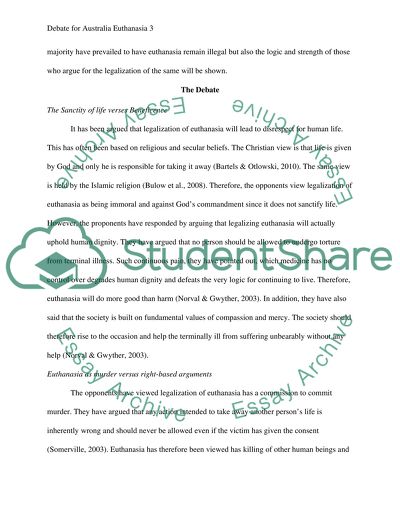Cite this document
(“Debate for Australia euthanasia Essay Example | Topics and Well Written Essays - 1750 words”, n.d.)
Debate for Australia euthanasia Essay Example | Topics and Well Written Essays - 1750 words. Retrieved from https://studentshare.org/nursing/1475009-debate-for-australia-euthanasia
Debate for Australia euthanasia Essay Example | Topics and Well Written Essays - 1750 words. Retrieved from https://studentshare.org/nursing/1475009-debate-for-australia-euthanasia
(Debate for Australia Euthanasia Essay Example | Topics and Well Written Essays - 1750 Words)
Debate for Australia Euthanasia Essay Example | Topics and Well Written Essays - 1750 Words. https://studentshare.org/nursing/1475009-debate-for-australia-euthanasia.
Debate for Australia Euthanasia Essay Example | Topics and Well Written Essays - 1750 Words. https://studentshare.org/nursing/1475009-debate-for-australia-euthanasia.
“Debate for Australia Euthanasia Essay Example | Topics and Well Written Essays - 1750 Words”, n.d. https://studentshare.org/nursing/1475009-debate-for-australia-euthanasia.


